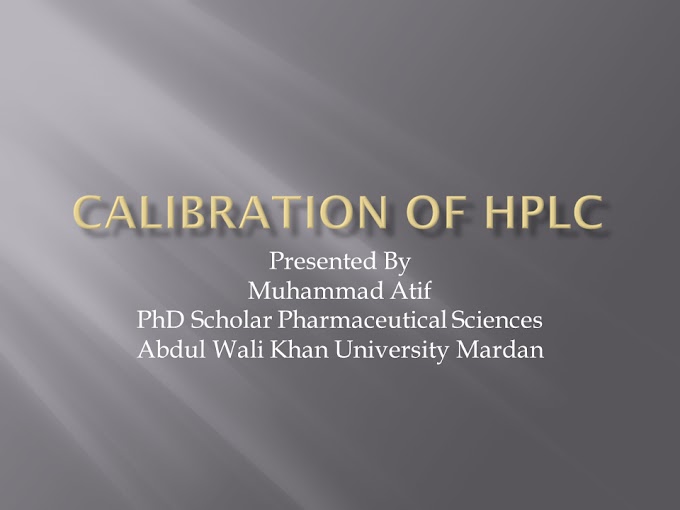High Performance Liquid
Chromatography
High Performance Liquid Chromatography
Ø A
form of column chromatography to separate, identify and quantify different
components of a mixture
Ø Developed
in 1970
Ø The
most widely used analytical technique
Ø HPLC
is an extension of conventional liquid chromatography.
Ø Powerful
tool in analytical techniques
Ø Columns
are tightly packed, and the eluent is forced through the column under high
pressure ( up to 5000 psi) by a pump.
Ø Allows
to use a very smaller particle size of the column packing material which gives
a much greater surface for interactions between the stationary phase and the
molecules flowing through it
Ø Allows
a much better separation of the component of the mixture.
HPLC technique
Ø Utilize
liquid mobile phase to separate the mixture
Ø Analytes
are 1st dissolved in a solvent then through column applying high
pressure.
Ø Mixture
is resolved into their respective component on the basis of retention time in
the column.
Components of HPLC
Ø Pump
Ø Injector
Ø Column
Ø Detector
Ø Data
record system
Pump
Ø A
pump forces the mobile phase trough the column at a much greater speed than
gravity-flow columns
Ø Pumps
are designed in order to maintain a stable flow rate.
Ø Flow
range 0.01 to 10 ml/min
Injector
Ø Inject
the liquid sample within range of 0.1 to 200 micron
Column
Ø Smooth-bore
stainless steel or heavy walled glass tubing
Ø Hundreds
of packed columns differing in size and packing are available.
Ø Columns
packing very in size from 0.3 to 20 micron.
Ø The
most commonly used packing material is silica gel.
Detector
Ø Hplc
detector monitor the elute as it leaves the column.
Ø Produce
electronic signals proportional to the concentration of each separated
component.
Types of Detector
Ø UV
detector
Ø Refractive
index detector
Ø PDA
detector
Ø Electrochemical
detector
Ø Fluorescent
detector
Ø Mass
spectrophotometer
Classification on the basis of
polarity of mobile phase and reverse phase
Ø Normal
phase
non polar mobile
phase and polar stationary phase
Ø Reverse
phase
polar mobile
phase and non polar stationary phase
Applications
Ø Chemistry
and biochemistry research analyzing complex mixtures.
Ø Purifying
chemical compound.
Ø Quality
control to ensure the purity of raw material.
Ø Analyzing
air and water pollutants.
Ø Monitoring
pesticide level in the environment.
Ø To
survey food and drug products.
Ø To
identify confiscated narcotics.
Ø To
determine the amount of impurities in newly drug products.
Ø Isolation
of natural products.
Ø Developing
processes for synthesizing chemical compound.






0 Comments